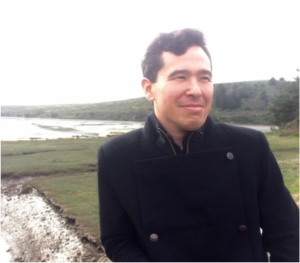
Teaching writing involves taking students on journeys of self-discovery and self- creation. Not only does a writer learn more about themselves by tapping inner experiences as fodder for writing; through the process of revision, they discover and invent new talents and abilities. My creative writing pedagogy centers on encouraging, and challenging, students to go deeper in their material, and in themselves.
Inspired by techniques from Maria Irene Fornes, I guide students in opening themselves to receive characters, events, and locations that wouldn’t come to them through conscious thought. I instruct them to observe and describe with precision – the color and condition of clothing, the speed and rhythm of movement, the timbre and diction of speech. One student mentioned how impacted she was when her grandmother, long deceased, appeared in her writing. We all contain mysteries; I train students to access their own inner richness that may have been previously hidden to them.
Creation is destructive. Writing becomes good through deleting characters, scenes, and pages, to find the essence. A student creating an interview-based play about Puerto Rican dancers felt overwhelmed by the abundance of material she had collected. She didn’t know what to cut. I told her to look for what to keep by highlighting what felt most indispensable. Mining the text helped her articulate what she really wanted to say.
Feedback is central to my engagement with students. In advising a former wrestler on his solo play about his childhood love of Godzilla movies, I gave him praise: “The connection you draw between Godzilla and climate change is fantastic!” “Godzilla’s bond with his creator is moving.” But I also pushed him to make his work more personal: “I’m overwhelmed by fanboy trivia. Where are you in this scene? Be vulnerable.” As a teacher, I praise and challenge. Praise alone can breed arrogant complacence; pure challenge can invite defeat. By offering both, I try to build writers’ confidence to tackle increasingly focused and intricate tasks.
My own writing involves extensive research; I hole up libraries, and have interviewed people in Texas, Guatemala, Papua New Guinea. Inspired by my mentor Naomi Wallace, I direct students to expand their knowledge beyond their own experiences. I encouraged a student who adapted Medea to focus on incarcerated women to move her process beyond articles by interviewing real women in prison. She did, and her project became grounded and imbued with truths society often overlooks. I guide students in drawing connections among topics and events that are not obvious, and suggest sources that might seem more suited for history, sociology, and ecology classes.
It is essential for students to learn from their own creative processes. When advising a student on his play about his gender transition, I asked what he observed in each draft, and what questions arose for him. After he performed the play, I asked what satisfied him about the work, what felt missing or incomplete, and what new ideas emerged. It’s important that the feedback not only come from me, but students themselves. In the spirit of Paulo Freire, they become protagonists of their own learning and growth.
Reciprocity is a crucial skill. It is invaluable for students to serve as dramaturges on each other’s work. Peer feedback is also key; students learn to speak about developing
works in supportive and constructively critical ways. I push them toward specificity. During class feedback sessions, when students say they “like” a classmate’s work, I ask them to identify specific moments that struck them. I ask how those moments made them feel, and what artistic techniques the creator employed.
At the core of education is learning to think critically – about a scene in a play, an event in history, and even one’s own thoughts and opinions. When a student made broad statements about politics and race that were fueled by her strong emotions, I respectfully challenged her to back up her statements with evidence and facts, in order to strengthen her arguments. Given that she is a young woman of color, I wanted her to arm herself with rhetorical tools necessary to protect herself from critique and attack.
I center specificity and rigor in my teaching because I am rooting for my students. I want them to write magnificent works that take people’s breath away. Such artistic feats do not come easily. I want them to leave my classes prepared to devote long hours to toiling over single sentences and words, and tearing apart scripts to work out structural kinks. Ultimately, I want them to walk away ready to succeed.